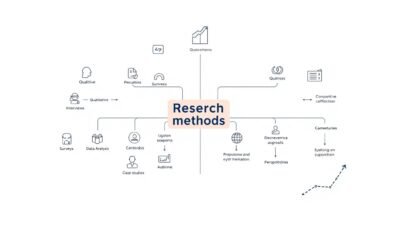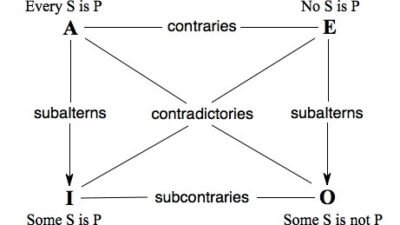Colleges and universities face a crucial question: Are they preparing students for tomorrow’s challenges? This inquiry drives the transformation of U.S. higher education policies. Institutions are reimagining teaching and learning to meet the demands of our changing world.
Higher education policies guide institutions towards excellence and innovation. They shape curriculum design and faculty development. These policies ensure students receive quality, relevant, and forward-thinking education.
The higher education landscape is shifting dramatically. Institutions are adapting to new technologies and embracing diverse teaching methods. They’re addressing the needs of an increasingly global student body.
This evolution in academic guidelines sets new standards for educational excellence. It’s not just about keeping up with the times. It’s about leading the way in 21st-century education and beyond.
Preparing for the UGC NET exam can be a daunting task, but with the right resources, candidates can navigate the process effectively. Websites like MyJRF provide a comprehensive platform for aspiring educators, offering specialized guidance for UGC NET Paper 2 preparation and essential tips for acing UGC NET Paper 1. Additionally, understanding the revised syllabus provided by UGC is crucial for a targeted study approach. For official announcements and updates, candidates should regularly visit the UGC NET NTA portal, while the UGC’s job section and the main UGC website are invaluable for post-exam opportunities and academic resources. With these tools, candidates can maximize their preparation and set themselves up for success.
Key Takeaways
- Higher education policies are driving significant changes in teaching standards
- Education reform is focusing on preparing students for future challenges
- Academic guidelines are evolving to incorporate new technologies and teaching methods
- Institutions are adapting to meet the needs of a diverse, global student population
- Policy changes aim to enhance the quality and relevance of higher education
Overview of Higher Education Policies
Higher education policies shape colleges and universities nationwide. These regulations guide institutions towards excellence and equity in education. Let’s explore the key aspects of these influential directives.
Definition and Purpose
Higher education policies are rules governing how colleges operate. They maintain educational standards and ensure quality learning experiences. These policies cover admissions, curriculum, faculty qualifications, and financial aid.
- Maintaining academic quality
- Promoting equal access to education
- Ensuring responsible use of resources
- Fostering innovation in teaching and research
Evolution Over Time
Educational standards have changed significantly over time. Early policies focused on expanding access to higher education. The GI Bill opened college doors to millions of veterans.
In the 1960s and 1970s, policies promoted diversity and inclusion. Recent decades have emphasized accountability and outcomes. Funding is now often tied to graduation rates and job placement.
“Higher education policies are living documents that must adapt to the changing needs of students and society.”
Online education has led to new regulations for digital learning. Policies now tackle rising costs, technological advances, and workforce demands. The goal remains: creating an effective, accessible higher education system for all.
Key Challenges in Higher Education
Universities face major obstacles that affect their governance and policies. These issues impact how schools operate and serve students. They shape the way institutions run their programs.
Funding and Resource Allocation
Colleges struggle with tight budgets, which affects education quality. State funding cuts force schools to find new money sources. This often raises tuition fees, burdening students and families.
Schools must carefully balance their spending. They need to fund essential services while keeping programs competitive. This financial balancing act shapes school rules and course offerings.
Access and Equity Issues
Fair access to college remains a big concern. Money problems keep many qualified students from getting degrees. Schools aim to create welcoming spaces for all types of students.
| Equity Challenge | Impact on Students | University Response |
|---|---|---|
| Financial barriers | Limited access for low-income students | Increased need-based aid |
| Geographic disparities | Reduced opportunities for rural students | Online learning expansion |
| Cultural barriers | Underrepresentation of minority groups | Diversity initiatives and support programs |
Schools focus on creating paths for underserved groups. This includes scholarships, outreach programs, and support services. Universities try to balance high standards with fair practices.
They shape their rules to give everyone a chance. This helps make college more accessible to all students.
The Role of Accreditation in Education Quality
Accreditation shapes Higher Education Policies and maintains academic standards. It ensures institutions meet specific educational criteria. This process provides students with quality learning experiences.
Types of Accreditation
Different forms of accreditation uphold educational standards. Each type serves a unique purpose in the education system.
- Regional Accreditation: Evaluates entire institutions
- National Accreditation: Focuses on specific types of schools
- Programmatic Accreditation: Assesses individual programs or departments
Impact on Institutions
Accreditation greatly influences how colleges and universities operate. It affects their ability to attract students and secure funding. It also helps maintain academic guidelines.
| Area | Impact |
|---|---|
| Funding | Access to federal financial aid programs |
| Reputation | Enhanced credibility among students and employers |
| Quality Assurance | Regular reviews ensure continuous improvement |
| Transfer Credits | Easier transfer of credits between accredited institutions |
Institutions show their commitment to excellence by following accreditation standards. This process benefits students and improves Higher Education Policies. It also enhances academic guidelines across the board.
Transformative Policies Driving Change
Colleges are implementing new policies to meet evolving needs. These innovative approaches are reshaping higher ed legislation. They are also transforming teaching standards.
Competency-Based Education
Competency-based education focuses on mastery of skills, not time spent in class. Students progress at their own pace, showing proficiency in specific areas. Many schools adopt this approach to better prepare graduates for work.
Dual Enrollment Programs
Dual enrollment programs let high school students earn college credits. These initiatives bridge the gap between secondary and post-secondary education. They reduce time and costs for degree completion.
Open Educational Resources
Open educational resources (OER) are free, accessible materials for teaching and learning. They reduce textbook costs and increase access to education. Many colleges are integrating OER into their curricula.
| Policy | Benefits | Challenges |
|---|---|---|
| Competency-Based Education | Flexible pacing, skill-focused | Accreditation concerns |
| Dual Enrollment | Early college exposure, cost savings | Course rigor consistency |
| Open Educational Resources | Reduced textbook costs, increased access | Quality control, faculty adoption |
These policies are driving big changes in higher education. Schools are adapting to meet student needs. The college landscape is evolving to prepare for tomorrow’s workforce.
Ensuring Access for All Students
Higher Education Policies break down barriers to college. They shape government rules and educational standards. These policies aim to make higher learning accessible to everyone.
Federal and State Initiatives
The federal government leads efforts to widen college access. It sets standards and funds various programs. States create their own initiatives tailored to local needs.
- Pell Grants: Federal aid for low-income students
- TRIO Programs: Support for first-generation college students
- Work-Study Programs: On-campus job opportunities
Scholarships and Financial Aid
Financial support is key to ensuring access. Scholarships and aid programs help students overcome money hurdles. These programs aim to increase diversity and opportunity in higher education.
| Aid Type | Description | Eligibility |
|---|---|---|
| Merit-based Scholarships | Awarded for academic excellence | High GPA, test scores |
| Need-based Grants | Based on financial need | Low-income families |
| Student Loans | Borrowed money to be repaid | Most students qualify |
Federal and state programs work with financial aid to open doors. They make college possible for students from all backgrounds. These efforts help create a more inclusive higher education system.
The Impact of Technology on Teaching Standards
Tech has changed how we teach and learn. Schools are adapting to the digital age. They focus on bringing tech into higher education.
Online Learning Platforms
Online platforms have made learning more flexible. Schools now mix old and new teaching methods. This change calls for updates in how we teach online.
Digital Literacy Requirements
Digital skills are now vital for everyone in school. New rules make sure these skills are taught. This helps students get ready for tech-heavy jobs.
| Technology Impact | Policy Response | Educational Outcome |
|---|---|---|
| Online Learning Platforms | Updated Academic Guidelines | Increased Access to Education |
| Digital Literacy Demands | Revised Curriculum Standards | Enhanced Workforce Readiness |
| Ed-Tech Innovations | Continuous Policy Development | Improved Learning Experiences |
Schools must keep up with tech changes. They need to balance new ideas with good teaching. This ensures education meets the needs of our changing world.
International Perspectives on Higher Education Policies
Higher Education Policies differ greatly across the globe. They shape university governance and institutional regulations. Studying different systems offers valuable insights for improving education worldwide.
Comparing Australia and the US
Australia and the United States have unique approaches to higher education. Australian universities prioritize research-intensive programs. US institutions offer a wider range of educational experiences.
The table below highlights key differences:
| Aspect | Australia | United States |
|---|---|---|
| Funding Model | Government-subsidized | Mix of public and private funding |
| Admission Process | Centralized system | Individual institution-based |
| Degree Structure | Three-year bachelor’s degrees | Four-year bachelor’s degrees |
| Research Focus | Strong emphasis on research output | Varies by institution type |
Lessons from Europe
European Higher Education Policies offer unique views on university governance. The Bologna Process, started in 1999, aims to create a unified European Higher Education Area.
This system encourages:
- Student mobility across countries
- Standardized degree structures
- Quality assurance in education
These efforts have boosted collaboration between institutions. They’ve also improved recognition of qualifications across borders. Adopting similar approaches globally could enhance higher education quality and accessibility.
Faculty Development and Support Programs
Faculty development shapes college policies and maintains high educational standards. Universities invest in teaching staff to keep them updated with academic guidelines and best practices.
Mentorship Opportunities
Mentorship programs pair experienced educators with newer faculty members. These partnerships foster growth and maintain educational standards across departments.
Mentors guide mentees in navigating college policies and refining teaching methods. They also help advance careers and provide valuable insights.
- Regular one-on-one meetings
- Classroom observations and feedback
- Guidance on research and publication
- Support in understanding institutional policies
Professional Development Workshops
Universities offer workshops to help faculty stay current with evolving academic guidelines. These sessions cover topics from innovative teaching techniques to updates on college policies.
Common workshop themes include:
- Technology integration in the classroom
- Inclusive teaching practices
- Research methodology and grant writing
- Student engagement strategies
Institutions invest in faculty development to maintain educational standards. This ensures educators can adapt to changing academic landscapes and uphold rigorous standards.
Measuring Success in Higher Education
Higher education policies shape learning landscapes. This section explores tools and methods for measuring college and university success.
Metrics and Assessment Tools
Institutions use various metrics to evaluate their performance. These align with educational standards.
- Graduation rates
- Student retention
- Post-graduation employment
- Alumni satisfaction
Policy development relies on these indicators to improve educational practices. Low graduation rates might lead to changes in support services.
Longitudinal Studies and Outcomes
Long-term research offers insights into the lasting impact of higher education policies. These studies track students’ progress from enrollment through their careers.
| Study Focus | Duration | Key Findings |
|---|---|---|
| Career Trajectories | 10 years | Graduates from STEM programs show higher earning potential |
| Skill Development | 5 years | Liberal arts majors demonstrate strong adaptability in diverse fields |
| Social Mobility | 20 years | First-generation college graduates achieve significant socioeconomic gains |
Analyzing these outcomes helps refine educational standards. It creates better strategies for student success.
Ongoing evaluation ensures institutions meet evolving societal needs. It also addresses changing workforce demands.
The Future of Higher Education Policies
Higher education is facing major changes. New policies aim to tackle current issues and prepare students for future jobs. Education reform is shaping tomorrow’s learning spaces.
Trends Shaping Tomorrow’s Education
Higher ed laws are adapting to new tech and student needs. Schools now focus on personalized learning and skills-based education. AI is becoming more common in teaching methods.
These trends are driving change across colleges and universities. They push for more flexible and responsive ways of learning.
Policy Recommendations for Improvement
Future policies need to support lifelong learning and digital skills. They should also boost teamwork between schools and businesses. New rules must make education more accessible and affordable.
Higher ed laws must stay flexible and forward-thinking. By embracing new ideas, we can better prepare students for complex jobs.
Innovation can help solve emerging challenges in education. This approach will create a system that truly fits the needs of today’s students.
FAQ
What are Higher Education Policies?
Higher Education Policies are rules that guide colleges and universities. They cover academic standards, funding, and student access. These policies shape how higher education institutions operate and serve students.
How have Higher Education Policies evolved over time?
Higher Education Policies have grown to meet changing needs. They now address equity, technology, and global competition. These policies have expanded beyond just governing institutions.
What are the main challenges facing higher education today?
Funding limits and fair access to education are major issues. Keeping up with technology while maintaining quality is also challenging. Aligning education with job market needs is another key concern.
How does accreditation impact higher education institutions?
Accreditation ensures educational quality and affects funding eligibility. It influences an institution’s reputation and access to student aid. The process often leads to improved academic guidelines and practices.
What is competency-based education?
Competency-based education focuses on mastering skills, not time spent in class. Students can progress at their own pace. This approach may speed up degree completion and better match workforce needs.
How are Higher Education Policies addressing issues of access and equity?
Policies now focus on expanding access through scholarships and diversity programs. They also provide support for underrepresented groups. Governments are working to ensure fair opportunities in higher education.
What role does technology play in shaping teaching standards?
Technology is changing teaching by enabling online learning and personalized experiences. It requires new digital literacy skills. This has led to new guidelines for e-learning and digital competencies.
How do Higher Education Policies in the US compare to those in other countries?
US policies differ in funding, accreditation, and degree structures. Many European countries have centralized university governance. The US system is more decentralized compared to other countries.
What kinds of faculty development programs are supported by current policies?
Current policies support mentorship programs and professional development workshops. They also encourage research opportunities for faculty. These programs aim to improve teaching and foster innovation.
How is success measured in higher education?
Success is measured by graduation rates and job outcomes. Student satisfaction and research output are also important. Long-term studies of student outcomes help shape policies and assess effectiveness.





